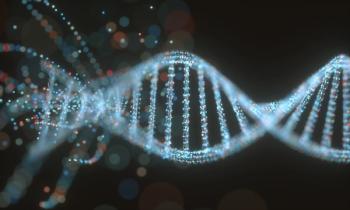
|Articles|August 16, 2011
Anemia in Pregnancy
Author(s)Rajeev Ojha
a. Deficiency: Iron, Folic A., Vitamin B12 b. Hemorrhagic: APH, Hookmworm c. Hereditary: Thalassemia, Sickle, H. Hemolotyic Anemia d. Bone Marrow Insufficiency: Aplastic Anemia e. Infections: Malaria, TB f. Chronic Renal Diseases or Neoplasm
Advertisement
Labs:
-
Hb 7.1 gm/dl, Hct 23%
-
WBC 5,400/mm3 (differenctial is normal)
-
Platelets 450,000/mm3
-
Mean Corpuscular volume (MCV) is 74 fl (normal 85-95f l)
-
Red cell Distribution Width (RDW) is 17.1% (normal 13-15).
•
Hemoglobin below 11gm/dl in 1st and 3rd trimester and below 10.5gm/dl in second trimester.
•
11gm/dl or less
•
By this standard, 50% of women not on hematinics become anemic
•
Anaemia may affect 1-% of pregnancies in developed countries and is considerably commoner in developing contries, where it is a major source of meternal morbidity and a contributor to mortality.
•
Up to 56% of all women living in developing countries are anaemic (Hb < 11 g/dl) due to infestations
•
Physiologic
•
Pathologic:
a. Deficiency: Iron, Folic A., Vitamin B12
b. Hemorrhagic: APH, Hookmworm
c. Hereditary: Thalassemia, Sickle, H. Hemolotyic Anemia
d. Bone Marrow Insufficiency: Aplastic Anemia
e. Infections: Malaria, TB
f. Chronic Renal Diseases or Neoplasm
•
Disproportionate increase in plasma vol, RBC vol. and hemoglobin mass during pregnancy
•
Marked demand of extra iron during pregnancy especially in second trimester
•
Hb: 10gm%
•
RBC: 3.2 million/mm3
•
PCV: 30%
•
Peripheral smear showing normal morphology of RBC with central pallor
1.
To meet the demands of the enlarged uterus with its greatly hypertrophied vascular system.
2.
To protect the mother, and in turn the fetus, against the deleterious effects of impaired venous return in the supine and erect positions.
3.
To safeguard the mother against the adverse effects of blood loss associated with parturition
•
Normal hemoglobin by gestational age in pregnant women taking iron supplement
•
12 wks 12.2 [11.0 - 13.4]
•
24 wks 11.6 [10.6 - 12.8]
•
40 wks 12.6 [11.2 - 13.6]
•
Iron loss: sweat, repeated pregnancy, hookworm infestation and malaria
•
Faulty absorption mechanism: due to high incidence of intestinal infestation there is intestinal hurry
•
Faulty diet habit: rich carbohydrate and high phosphate reduce absoprtion of iron
•
Increase iron demand
•
Diminished intake of iron
•
Disturbed metabolism
•
Pre-pregnancy health status
•
Excess demand
•
Symptoms lassitude, weakness, anorexia, palpitation, dyspnea
•
Signs Pallor, glossitis, soft systolic murmur in mitral area due to physiologic mitral incompetence
•
Degree: Mild 8-10gm%
Moderate: 7-8gm%
Severe: <7gm%
Smooth Tongue
Interpretation of plasma Iron
Iron
TIBC
Ferritin
Iron deficiency anemia
Decrease
Increase
Decrease
Anemia of chronic disease
Decrease
Decrease
Increase
Pregnancy
Increase
Increase
Normal
•
Iron requirement for normal pregnancy is 1gm
200 mg is excreted
300 mg is transferred to fetus
500 mg is need for mother
•
Total volume of RBC inc is 450 ml
1 ml of RBCs contains 1.1 mg of iron
450 ml X 1.1 mg/ml = 500m mg
•
Daily average is 6-7 mg/day
•
Prophylactic: Supplement Fe - 60 mg elemental Fe with Folic Acid
•
Curative: 200mg FeSo4 3 times daily till Hb level becomes normal, then maintenance dose of 1 tab 100 days
•
Due to impaired DNA synthesis, derangement in Red Cell maturation
•
It may be due to Def. of VitB12 or Folic Acid or both.
•
Megaloblastic anemia in pregnancy is almost always due to Folic Acid def.
•
Vit B12 def is rare in Pregnancy because its need is less in amount and amount is met with any diet that contains animal products.
•
Insidious onset, mostly in last trimester
•
Anorexia and occasional diarrhoea
•
Pallor of varying degree
•
Ulceration in mouth and tongue
•
Hemorrhagic patches under the skin and conjunctiva
•
Enlarged liver and spleen
•
Hb < 10gm%
•
Hypersegmentation of neutrophils
•
Megaloblast
•
MCV>100micrometer3
•
MCH>33pg, but MCHC is Normal
•
Serum Fe is Normal or high TIBC is low
•
Iron requirement for normal pregnancy is 1gm
- all woman of reproductive age should be given 400 mcg of folic acid daily
•
Curative
- daily administration of Folic acid 4mg orally for at least 4 wks following delivery
•
Hb < 10gm%
•
Hypersegmentation of neutrophils
•
Megaloblast
•
MCV>100micrometer3
•
MCH>33pg, but MCHC is Normal
•
Serum Fe is Normal or high TIBC is low
•
Increase incidence of abortion, prematurity, IUGR and Fetal loss.
•
Perinatal mortality is high.
•
Incidence of pre-eclampsia, postpartum hemorrhage and infection is increased.
•
Careful antinatal supervasion
•
Air travelling in unpressurised aircraft to be avoided.
•
Prophylatically Folic A. 1gm daily.
•
Regular blood transfusion at approx. in 6 weeks interval
Newsletter
Get the latest clinical updates, case studies, and expert commentary in obstetric and gynecologic care. Sign up now to stay informed.
Advertisement
Latest CME
Advertisement
Advertisement
Trending on Contemporary OB/GYN
1
Restrictive abortion laws linked to increased EMTALA violations
2
FDA approves expanded use of flibanserin for hypoactive sexual desire disorder in women
3
Objective blood loss measures reveal higher postpartum hemorrhage rates
4
Late-stage cervical cancer risk higher in older women
5









